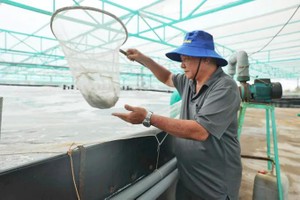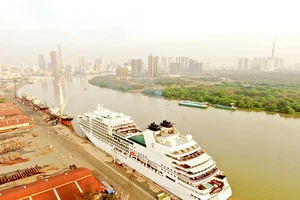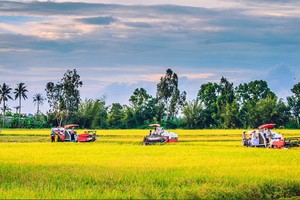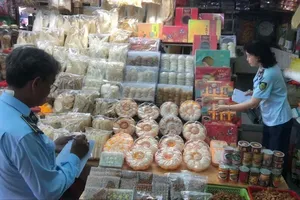According to the report of the Vietnam Directorate of Fisheries, in 2020, due to the impact of the Covid-19 pandemic, import and export activities were interrupted, major importing countries were closed, shipping was stagnant, and some orders were canceled or delayed the delivery time. Severe saltwater intrusion and drought in the Mekong Delta and extreme weather had made farmers and export processing enterprises encounter many difficulties.
Meanwhile, aquaculture activities in Vietnam are still on a rising trend. Last year, the total aquaculture production reached 4.56 million tons, an increase of 1.5 percent. Specifically, the output of pangasius fish touched 1.56 million tons, as high as the same period last year. Export turnover of pangasius fish of the whole year hit US$1.5 billion, accounting for 18 percent of the total export turnover. The output of brackish water shrimp reached 950,000 tons, with export turnover hitting $3.7 billion, accounting for 44 percent of total export turnover.
The marine farming area was 260,000 hectares and 7.5 million cubic meters of cages with a total production of 600,000 tons. Of which, marine fish were 8,700 hectares and 3.8 million cubic meters of cages, with an output of 38,000 tons; mollusks were 54,500 hectares with an output of 375,000 tons; lobsters were 3.7 million cubic meters of cages, with an output of 2,100 tons; seaweed was 10,150 hectares, with an output of 120,000 tons; the rest was marine crabs and other species.
Currently, aquaculture farmers are facing many difficulties. Specifically, the Covid-19 pandemic prolongs for a long time and has had a profound impact on life and global commercial activities. Export activities were interrupted due to border closures, several fast-food restaurants in major importing countries were closed, shipping was stagnant, some orders were canceled or delayed the delivery time, some customers refused to fulfill new orders, and there was a temporary shortage of labor.
Moreover, the supply of raw materials for aquatic feed was seriously affected, the price of raw materials for aquatic feed escalated continuously, causing production costs to climb, reducing the competitiveness of products.
The weather was complicated and unusual, and severe and prolonged saltwater intrusion and drought in the Mekong Delta make aquatic products susceptible to disease. The rate of loss is high, affecting aquaculture production.
To resolve difficulties for aquaculture, the Vietnam Directorate of Fisheries proposed to promote linkages in production to access the supply of high-quality and affordable input materials, promote scientific application, increase productivity, reduce costs, reduce feed conversion ratio (FCR), and protect the environment in aquaculture.
Authorities should continue to strictly control the quality of aquatic breeds and materials, organize delegations to inspect and check facilities that produce breeds, aquatic feed, and products for the treatment and improvement of the environment used in aquaculture and strictly handle violations.
Aquaculture output is expected to reach 4.75 million tons, equal to 104.2 percent of that in 2020. Of which, production of pangasius fish will be 1.55 million tons; production of shrimp of all kinds will be 980,000 tons, including 280,000 tons of black tiger shrimp, 633,000 tons of white-leg shrimps, and the rest of other types of shrimps; the rest is the production of other aquatic products, such as tilapia fish and marine fish.
























